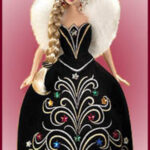The American Girl line of dolls was started by a woman named Pleasant Rowland, who began the line in 1986. Her aim was to make a line of dolls that were not only fun to collect and play with but were also educational. The line included dolls of different races, eye colors, skin tones and hair colors that came from specific historical periods. For example, one doll came from the Civil War era while another came from the Great Depression years.
The company was a huge success and led to the formation of a company called Pleasant Company, which was later changed to American Girl to reflect the dolls that had made so much money. For many years, a new doll was introduced periodically that would explore not only a new era in history but also the problems or issues prevalent during that period. Some of these heady topics included racism, slavery, child labor, alcoholism, poverty, child abuse and war.
One reason this line of dolls was such a success is that accompanying books told their stories and were not afraid to take on controversial subjects. The American Girls in these stories were generally between the ages of 8 and 10 and were very intelligent. The books did not dumb down their messages; they treated the target audience of preteen girls as if they were smart young ladies. This was very refreshing to parents and daughters alike and helped spawn big sales.
For nearly an entire decade, creator Rowland kept the American Girl dolls in past historical times. A call was made to update the series to include some modern-day girls. In 1995, the company relented and released the “Just Like You” series of dolls, which is now called “My American Girl.” It was meant to reflect today’s diversity and to encourage values such as friendship and education while still valuing individuality. The line was an instant success.
With such success, it is no wonder toy giant Mattel came calling. In 1998, Rowland sold her beloved franchise to Mattel for a whopping $700 million, and the company still owns the rights to the franchise.
When any book or concept, such as American Girl, is a big pop culture phenomenon, Hollywood is sure to take an interest in it. In 2005, Julia Roberts’ production company, Red Om, released “Samantha: An American Girl Holiday” as a television movie. It debuted to good ratings, ensuring new American Girl movies would be made.
“Felicity: An American Girl Adventure,” “Molly: An American Girl on the Home Front,” “Kit Kittredge: An American Girl” and “An American Girl: Chrissa Stands Strong” were released between 2005 and 2009. Although the entertainment landscape seemed to be littered with American Girl sagas, adoring fans continued to demand more.
As a result, “An American Girl: McKenna Shoots for the Stars” was quickly made in 2012 for a direct-to-DVD release. Like many of the previous installments, this film had a few unknown names mixed in with some well-known ones. For example, the lead role of McKenna is played by newcomer Jade Pettyjohn, who has had small guest starring roles in various television series. Her parents are played by Nia Vardalos (“My Big Fat Greek Wedding”) and Ian Ziering (“Beverly Hills, 90210”), whose names are likely well-known to the parents of girls who will enjoy the film.
Pettyjohn plays McKenna, a young gymnast who aspires to be one of the best gymnasts in the world. She knows that succeeding in the sport will require not only hard work and dedication but also the approval of her parents, who value education above all else. McKenna learns some tough lessons about dreams and friendship after some of her fellow gymnasts become jealous of her. Like previous American Girl films, this picture treats both the subject and the audience with respect and never waters down the importance of the lessons learned. It is also the first American Girl movie to be set in modern times instead of a previous historical period.
Vardalos admits that the only reason she took the role is because it would make her a hero to her young daughter. This is indicative of why American Girl movies are so important. They have a built-in audience of impressionable young girls, so any messages they send will be well received. That is how this empire grew from a handful of mail order dolls to a multimillion dollar marketing machine that shows no sign of stopping.






